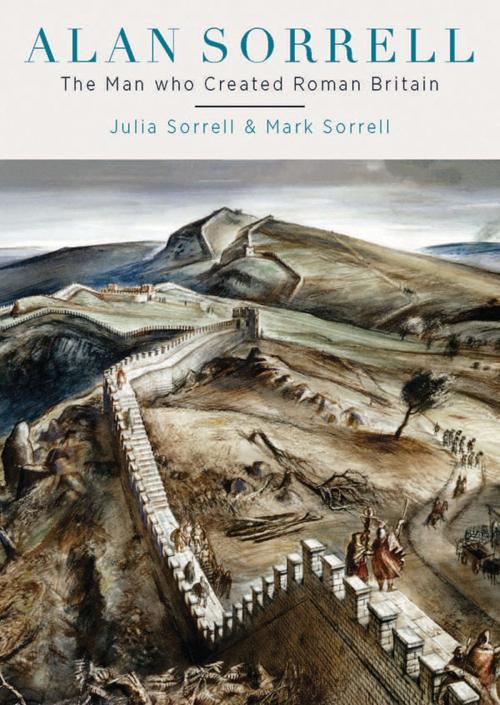Alan Sorrell
The Man Who Created Roman Britain
Nonfiction, History, Ancient History, Rome, British, Art & Architecture, General Art| Author: | Julia Sorrell, Mark Sorrell | ISBN: | 9781785707414 |
| Publisher: | Oxbow Books | Publication: | June 30, 2017 |
| Imprint: | Oxbow Books | Language: | English |
| Author: | Julia Sorrell, Mark Sorrell |
| ISBN: | 9781785707414 |
| Publisher: | Oxbow Books |
| Publication: | June 30, 2017 |
| Imprint: | Oxbow Books |
| Language: | English |
Alan Sorrell’s archaeological reconstruction drawings and paintings remain some of the best, most accurate and most accomplished paintings of their genre that continue to inform our understanding and appreciation of historic buildings and monuments in Eutope, the Near East and throughout the UK. His famously stormy and smoky townscapes, especially those of Roman Britain, were based on meticulous attention to detail borne of detailed research in collaboration with archaeologists such as Mortimer Wheeler, Sir Cyril Fox and sire Barry Cunliffe, who excavated and recorded his subjects of interest. Many of his reconstructions were commissioned to accompany visitor information and guidebooks at historic sites and monuments where they continue to be displayed. But archaeological subjects were not his only interest. His output was prodigious: he painted murals, portraits, imaginative and romantic scenes and was an accomplished war artist, serving in the RAF in World War II. In this effectionate but objective account, Sorrell’s children, both also artists, present a brief pictorial biography followed by more detailed decriptions of the genesis, research and production of illustrations that demonstrate the artist’s integrity and vision, based largely on family archives and illustrated throughout with Sorrell’s own works. So influential were Sorrell’s images of Roman towns such as London, Colchester, Wroxeter, St Albans and Bath, buildings such as the Heathrow temple and the forts of Hadrian’s Wall, that he became known as the man who invented Roman Britain.
Alan Sorrell was a celebrated and accomplished artist, most reknowned for his meticulously researched archaeological reconstructions, especially of the towns and buildings of Roman Britain, many of which are still on display at historic sites throughout Britain. Written by his children, each accomplished artists in their own right, this is the first book to chart his life as an artist and, in particular, to examine the detailed research that led to the creation of individual paintings.
Alan Sorrell’s archaeological reconstruction drawings and paintings remain some of the best, most accurate and most accomplished paintings of their genre that continue to inform our understanding and appreciation of historic buildings and monuments in Eutope, the Near East and throughout the UK. His famously stormy and smoky townscapes, especially those of Roman Britain, were based on meticulous attention to detail borne of detailed research in collaboration with archaeologists such as Mortimer Wheeler, Sir Cyril Fox and sire Barry Cunliffe, who excavated and recorded his subjects of interest. Many of his reconstructions were commissioned to accompany visitor information and guidebooks at historic sites and monuments where they continue to be displayed. But archaeological subjects were not his only interest. His output was prodigious: he painted murals, portraits, imaginative and romantic scenes and was an accomplished war artist, serving in the RAF in World War II. In this effectionate but objective account, Sorrell’s children, both also artists, present a brief pictorial biography followed by more detailed decriptions of the genesis, research and production of illustrations that demonstrate the artist’s integrity and vision, based largely on family archives and illustrated throughout with Sorrell’s own works. So influential were Sorrell’s images of Roman towns such as London, Colchester, Wroxeter, St Albans and Bath, buildings such as the Heathrow temple and the forts of Hadrian’s Wall, that he became known as the man who invented Roman Britain.
Alan Sorrell was a celebrated and accomplished artist, most reknowned for his meticulously researched archaeological reconstructions, especially of the towns and buildings of Roman Britain, many of which are still on display at historic sites throughout Britain. Written by his children, each accomplished artists in their own right, this is the first book to chart his life as an artist and, in particular, to examine the detailed research that led to the creation of individual paintings.















